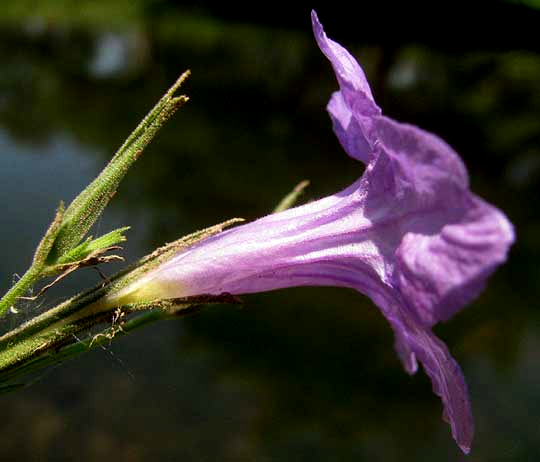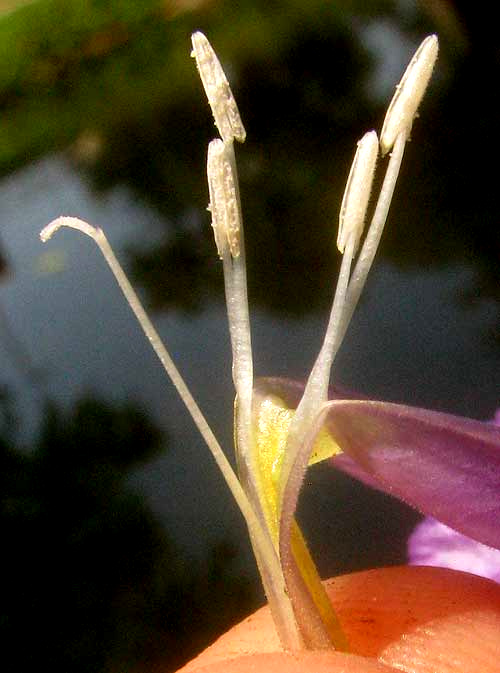Excerpts from Jim Conrad's
Naturalist Newsletter
from the June 8, 2014 Newsletter issued from the Frio Canyon Nature Education Center in the valley of the Dry Frio River in northern Uvalde County, southwestern Texas, on the southern border of the Edwards Plateau; elevation ~1750m (~5750 ft); N29.62°, W99.86°; USA
WILD PETUNIA
In a corner of the lawn of Uvalde's public library I met an old friend, pictured below:

This is one of several "Wild Petunias" of the genus Ruellia. Back in the Yucatan at the beginning of the dry season in November this same species grew outside the hut I stayed in, shown at http://www.backyardnature.net/yucatan/ruellia.htm.
There we called this species Mexican Wild Petunia because mostly it's distributed in Mexico, but in the US, where it occurs from Arizona to Louisiana but mostly in Texas, normally it's just called Wild Petunia. It's RUELLIA NUDIFLORA and it's not a petunia at all. The petunias grown in gardens are members of the Nightshade or Tomato Family, the Solanaceae, while Ruellia belongs to the Acanthus Family, the Acanthaceae.
About 25 Ruellia species are listed for North America and about ten conceivably could turn up here. Ruellia nudiflora stands out from all the others because its flowers are dispersed in a diffuse panicle at the top of the plant -- instead of being closer packed and often arising where leaves attach to the stems -- plus its flowers are dark lavender, not white to pale lavender.
An interesting feature of flowers of the genus Ruellia is that they're almost radially symmetrical, but not quite. A radially symmetrical corolla is one that can be cut down the middle in several directions, resulting in both sides of the cut being a mirror image of the other side. In contrast, bilaterally symmetrical corollas can be cut down the middle only one way so that mirror images result. Most flowers of plants in the Mint Family are bilaterally symmetrical. Our current Wild Petunia's slightly bilaterally symmetrical corolla is shown below:

Notice that the bottom corolla lobe is slightly larger than the others, which wouldn't be the case in a radially symmetrical corolla. A shot of the corolla from the side is shown below:

There you can see that the corolla tube very slightly curves downward. A radially symmetrical corolla wouldn't that.

Above, a Ruellia nudiflora corolla has been split open to show the flower's four paired stamens on the picture's right side, and the single long, slender style at the left.
This particular wild petunia species grows weedily in Uvalde, in abandoned lots, along streets, at the water's edge of the Leona River in Memorial Park and elsewhere. At this time of year it's one of the most conspicuous native wildflowers and I'm glad it's tough enough to compete with the usual invasive weeds. The species grows easily from seeds, so in this area it would make sense to collect seeds when the fruits mature in a few weeks, and sown in unmowed places around the house.